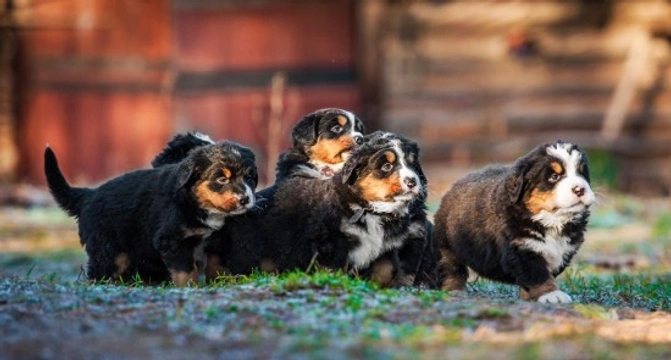
What is the runt of the litter ?
In canine terms, the runt of the litter is the puppy that is considerably smaller than the other puppies at birth, and that might be slower to develop and ultimately, reach a smaller adult size. Sometimes, being the runt of the litter comes accompanied by a rather frail disposition and potentially, a greater risk of health problems, but this is not always the case. Not every litter will have a runt, and simply because a puppy is a little smaller than the others, this does not automatically make them a runt either!
Why might a puppy be the runt?
There are a whole variety of reasons for why a puppy might be smaller than the others at birth or be the runt, and not all of them are fully understood. However, runts usually only appear in medium to large sized litters rather than small litters of two or three puppies, and the small size and development of the runt begins in the womb. The womb of dogs is Y-shaped rather than round, and the runt will generally be positioned towards the middle of the “Y,” which places them furthest away from the nutritious blood supply that supports the pups, meaning that the runt is last in the line when it comes to receiving the essential nutrients necessary for normal development.
When the puppies are born, the runt usually (but not always) comes out last, and even at this incredibly young age, will appear to be smaller, and will weigh less, than the other pups.
Issues with the runt after birth
Because the runt will generally be the smallest, weakest of the puppies, they will again usually come in last when it comes to getting to the teats to drink milk and colostrum, a nutrient-rich compound that the bitch produces immediately after birth to support the puppies. As well as providing essential nutrients, colostrums also contains vital antibodies that help to protect the puppies from illness and infection during their first few weeks of life, so it is vitally important that the runt gets enough to eat!
You may need to carefully supervise feeding to ensure that the runt gets plenty of opportunity to feed and grow strong, or if this is not possible, you might have to invest in a special puppy milk substitute that your vet can provide, to make up for the lack of nutrients in the runt’s diet.
Giving the runt the best chance of survival
It is important to supervise the dam’s interaction with the runt, right from the moment they are born. When the pups are born, they will still be contained within the amniotic sac that supports them within the womb, which the mother dog breaks immediately after birth to free the puppies and allow them to take their first breaths. Because in the wild, puppies that are ill, deformed or weak are unlikely to live to maturity, however, sometimes the dam will reject weak puppies, in order to give the rest of the litter the best chance of survival.
This means that there is a possibility that the dam will not pay any attention to the runt when they are born, potentially not even freeing them from the amniotic sac and leaving them to die- although this will by no means happen in all cases. If the dam ignores the puppy and does not lick them and free them from the sac after birth, you will need to intervene and do this for them, in order to allow them to survive. You will also need to encourage the puppy to feed, and the dam to feed it.
If the dam does not accept the puppy even at this stage, you must pay special attention to their interactions, as it is possible that the dam will still ignore it and refuse it food, and possibly, even kill the runt. If this looks to be on the cards, or the dam is aggressive towards the runt, it is vital that you remove the runt from the dam and prepare to raise them by hand, something that will need to begin immediately, and that will almost certainly need advice from an experienced breeder or your vet.
The runt personality
It is possible that the runt will remain rather smaller than its littermates even when fully grown, although often, the runt will catch up quickly to its siblings when properly cared for! Again, it is possible that the runt will remain slightly delicate and more fragile for the duration of its life, but this is by no means a definite!
The runt puppy usually grows up to be a very loving dog, which bonds strongly with its owners as it will have had that much more chance to benefit from one to one human care when it was very little. However, it would be a mistake to think that the runt will automatically be a quiet, shy submissive puppy- the runt has to struggle to survive, feed enough and get everything they need, which ultimately will produce a plucky, brave puppy who is no stranger to fighting to get their needs met!



